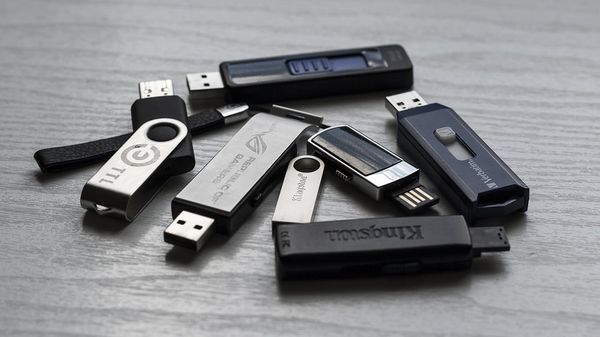Users still falling for infected USB scam, police warn

USB flash drives are life savers that helped us get rid of the CD-ROM once and for all. Whether we want to bring a presentation to work, transfer pictures from one laptop to another, watch a movie or listen to music on our home theater, we can count on the USB storage device.
Since they now come in all shapes and sizes and are decently priced, they are indispensable. So it”s hard to understand why users still get extremely excited about free USBs from shady sources. Worst of all, if they find a random flash drive, chances are they will take it and open the files on it, naturally out of curiosity. Now here”s the problem: not even for one minute did they think that their computer has been instantly infected with malware or rootkit software, in most cases due to an auto-running file (autorun.inf.)
This is probably why either a criminal or a group of bored youngsters in Australia could infect computers with malware simply by dropping unmarked USB drives in random mailboxes. Police have issued a warning, urging residents to not use the corrupt USBs left in their mailboxes.
So what happens when a USB compromises your computer? It depends on the type of malware it installs and the level of damage the criminals want to cause. In most cases, all data is lost and, what”s worse, your computer can be an entry point to infect other devices connected to the network. This would turn into real chaos if you”re an internet of things fan with a bunch of gadgets connected to the same infrastructure the infected computer is running on.
If you are really that curious about the contents of a USB you found at the grocery store, make sure you at least scan it before you do anything with it, although in some cases it is enough to simply insert it in the computer to install an exploit or spyware.
The best strategy to stay free of worms, Trojans, spyware and other malware is to, obviously, not take the suspicious device but, if you really need to use it, make sure you install a security solution on your computer, one which can offer high-level protection. Some allow you to immunize the USB to prevent any malware from auto-running. Run scans and updates on a daily basis to ensure you have the latest security patches. If you have professional, you can also use it to clean the infected USB, however if you are not very tech-savvy, there might be risks of re-infecting the device, so it”s best to be vigilant.
tags
Author
After having addressed topics such as NFC, startups, and tech innovation, she has now shifted focus to internet security, with a keen interest in smart homes and IoT threats.
View all postsRight now Top posts
How to Protect Your WhatsApp from Hackers and Scammers – 8 Key Settings and Best Practices
April 03, 2025
Outpacing Cyberthreats: Bitdefender Together with Scuderia Ferrari HP in 2025
March 12, 2025
Streamjacking Scams On YouTube Leverage CS2 Pro Player Championships to Defraud Gamers
February 20, 2025
How to Identify and Protect Yourself from Gaming Laptop Scams
February 11, 2025
FOLLOW US ON SOCIAL MEDIA
You might also like
Bookmarks








